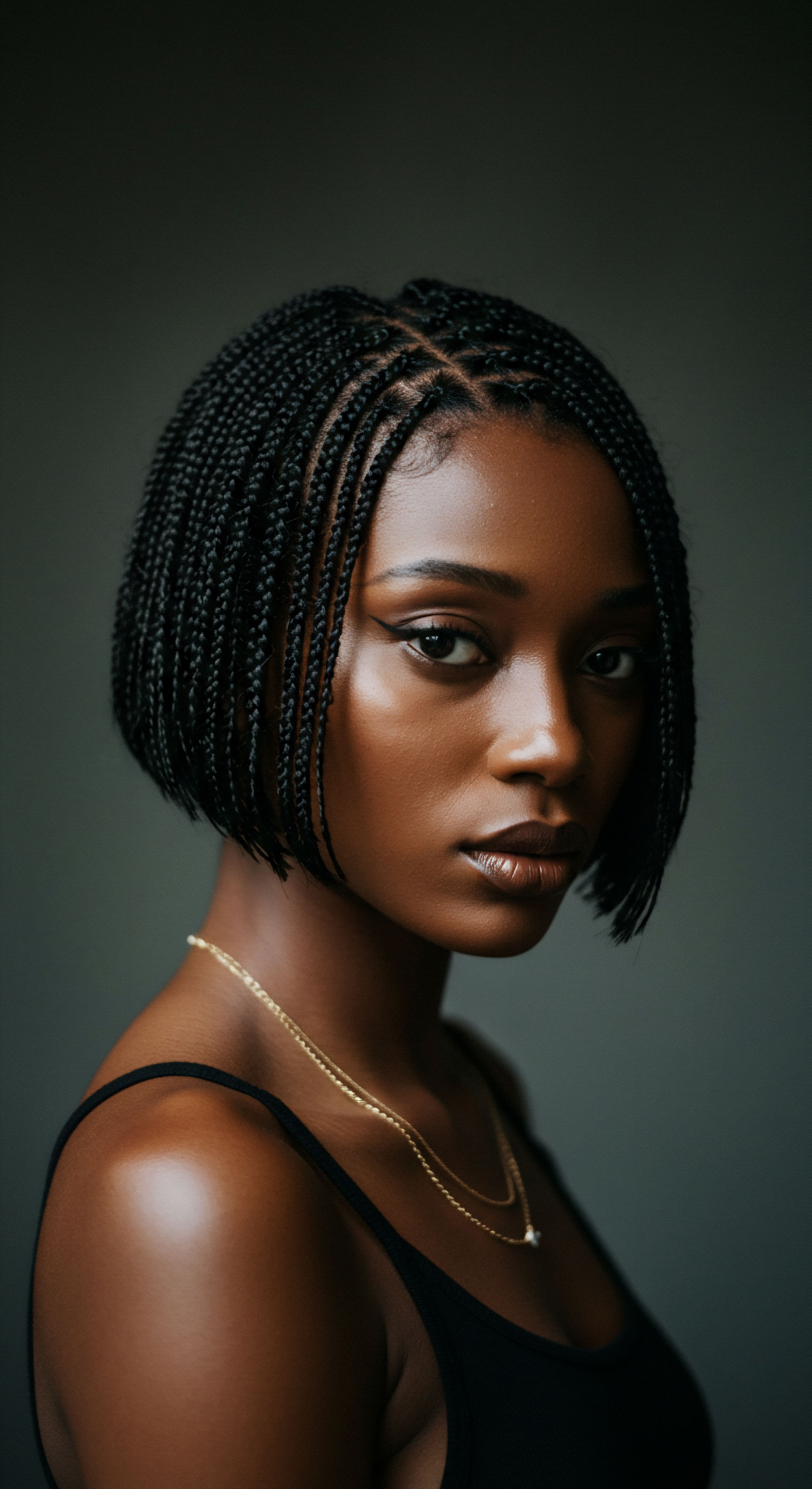
Roots
The sun-drenched lands of ancient Egypt, cradled by the life-giving Nile, birthed a profound understanding of the natural world, a wisdom that extended to every aspect of existence, including the care of hair. It was a time when the rhythm of life moved with the sun and the seasons, and every element from the earth was seen through a lens of utility and spiritual connection. For the people of this venerable civilization, hair was far more than mere adornment; it served as a symbol of status, a canvas for self-expression, and a protective shield against the harsh desert environment. The natural ingredients they sought from their surroundings became the very foundations of their hair care practices, revealing an intuitive knowledge of botanical and mineral properties.
Consider the daily interplay between the Egyptians and their environment. The arid climate, the omnipresent sand, and the intense sun demanded a sophisticated approach to personal hygiene and beauty. Cleanliness was not just about physical comfort; it carried significant social and spiritual weight, viewed as a sign of reverence.
This deep-seated appreciation for well-being meant that the resources of the land were carefully observed and utilized. Their hair rituals, therefore, were not frivolous acts but deliberate engagements with nature’s bounty, designed to preserve, protect, and enhance the hair, ensuring its health and vitality in a challenging landscape.

Ancient Ingredients for Hair Vitality
The ancient Egyptians drew upon a rich palette of natural substances to maintain their hair. These ranged from readily available plant oils to more exotic resins and minerals, each selected for its perceived benefits. Their methods were often practical, addressing common concerns such as dryness, breakage, and even the unwelcome presence of lice, a persistent issue in any ancient society. Yet, these practices also reached into the realm of aesthetic and spiritual meaning, intertwining beauty with well-being and cultural identity.
- Almond Oil ❉ A cherished elixir, this oil was extracted from the seeds of the almond tree. Ancient Egyptians valued it for its nourishing qualities, using it in both skincare and hair treatments to impart softness and sheen.
- Castor Oil ❉ Widely used, castor oil served a dual purpose. It helped keep hair moisturized and was also believed to assist in managing lice, a common concern in that era.
- Moringa Oil ❉ Extracted from the moringa tree, this oil was prized for its deep moisturizing properties, helping to combat the drying effects of the desert sun.
- Honey ❉ A natural humectant, honey was applied to hair to retain moisture, reduce frizz, and improve overall hair strength. It also possessed antibacterial properties beneficial for scalp health.
- Henna ❉ Sourced from the leaves of the henna shrub, this natural dye was used to color hair, particularly to conceal grey strands, imparting a reddish tone. Beyond color, it was also valued for its strengthening properties.
The systematic application of these ingredients speaks to a deep, observational knowledge of their effects. They understood, for instance, that certain oils could seal moisture into the hair shaft, a critical need in their arid climate. The inclusion of ingredients like honey, with its known humectant properties, further underscores this intuitive grasp of hair science, long before modern chemistry provided the scientific explanations.
Ancient Egyptians meticulously selected natural oils and plant extracts to nourish and protect their hair, reflecting a deep, intuitive understanding of their environment’s influence on hair health.
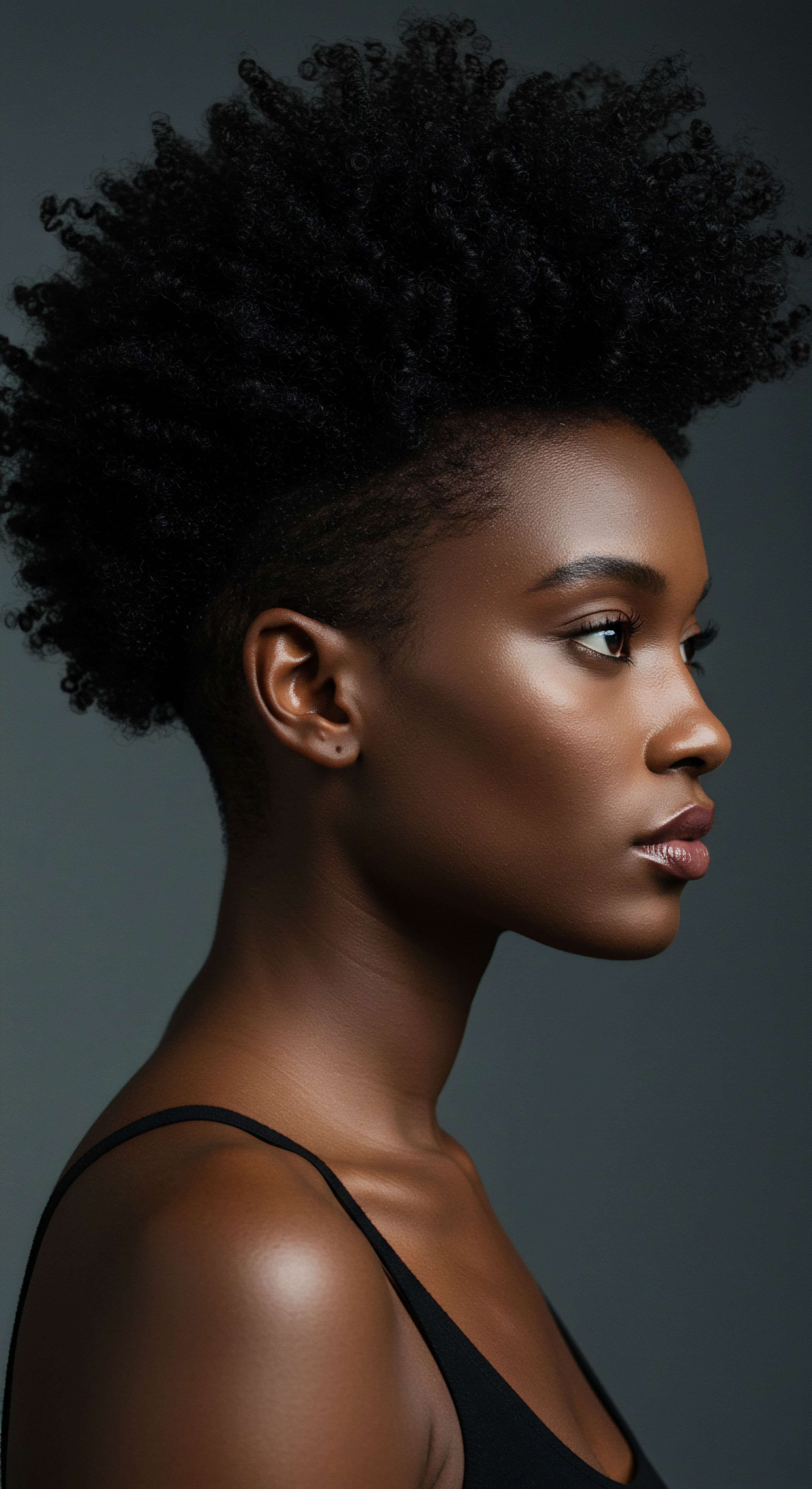
What Was the Significance of Hair in Ancient Egyptian Culture?
Hair in ancient Egypt held profound cultural and symbolic meaning, extending beyond mere aesthetics. It was a powerful indicator of a person’s social status, age, and even their spiritual standing. From depictions in tomb paintings to the discovery of actual hair artifacts, evidence abounds that great care was given to hair, whether natural or in the form of elaborate wigs. For example, priests often shaved their heads to maintain ritual purity, while elite men and women wore intricate wigs as a sign of their elevated position.
The act of grooming and styling hair was intertwined with concepts of vitality and power. Ancient texts and archaeological findings suggest that Egyptians were concerned with preventing baldness and graying, seeking remedies for these conditions. Hair offerings, often in the form of braided locks, have been found in tombs, indicating a belief in hair’s protective qualities, especially for children and the deceased, who were considered most vulnerable to unseen forces. This ritualistic aspect highlights how deeply hair was connected to life, death, and the spiritual realm.
The very act of controlling one’s hair, or having it controlled, carried symbolic weight. Pharaohs, for instance, were often depicted seizing their enemies by the hair, a powerful visual representation of dominance and subjugation. This gesture was not unique to Egypt but resonated across many ancient cultures, where the hair was seen as a conduit of personal power. The meticulous care, the elaborate styles, and the ritualistic offerings all underscore the central role hair played in defining identity and connection to the divine in ancient Egyptian society.

Ritual
Stepping from the foundational knowledge of ancient Egyptian ingredients, we arrive at the realm of ritual, where daily practice transformed natural bounty into deliberate acts of care. The application of these ingredients was far from haphazard; it was a series of mindful steps, often steeped in tradition and a gentle reverence for the body. The Egyptians understood that consistent care was the pathway to vibrant hair, and their routines, while rooted in practicality, possessed an undeniable grace, a quiet dedication to well-being that resonates even today.
Their hair care was an intimate dance with the elements, a response to the sun, the sand, and the need for hygiene. Imagine the meticulous preparation of oils, the careful application, and the styling that followed. These were not just chores; they were opportunities to connect with the self, to adorn, and to protect. The practices reveal a people who understood the delicate balance required to maintain healthy hair in a challenging environment, transforming simple ingredients into a holistic regimen.
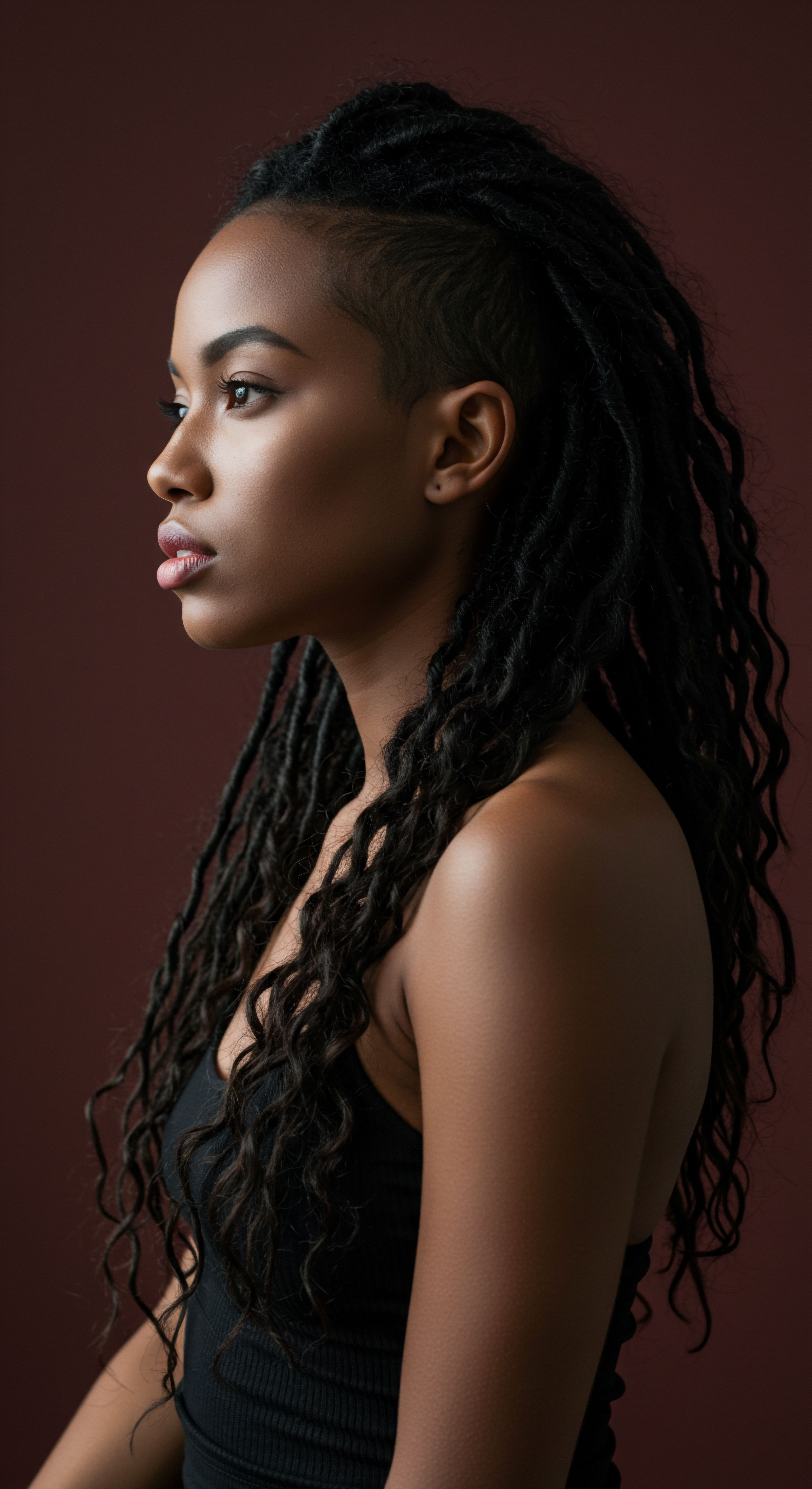
Crafting Elixirs and Applying Treatments
The creation of hair care preparations in ancient Egypt involved a combination of simple extraction methods and careful blending. Oils like almond, castor, and moringa were likely obtained through pressing seeds, preserving their natural properties. These oils often served as carriers for other ingredients, allowing for deeper penetration and absorption.
One of the most common applications involved massaging these oils directly into the hair and scalp. This practice would have served multiple purposes ❉ moisturizing the hair shaft, conditioning the scalp, and potentially aiding in the removal of debris or even lice. Combs, often crafted from ivory, bone, or wood, were not only used for detangling but also for distributing these rich oils evenly from root to tip.
| Ingredient Almond Oil |
| Preparation Method Cold-pressed from seeds |
| Primary Hair Benefit Nourishment, softening, shine |
| Ingredient Castor Oil |
| Preparation Method Pressed from beans |
| Primary Hair Benefit Moisture retention, scalp health, lice deterrent |
| Ingredient Moringa Oil |
| Preparation Method Extracted from seeds |
| Primary Hair Benefit Deep hydration, environmental protection |
| Ingredient Honey |
| Preparation Method Collected from beehives |
| Primary Hair Benefit Humectant, antibacterial, frizz reduction |
| Ingredient Henna |
| Preparation Method Ground leaves mixed with liquid |
| Primary Hair Benefit Hair coloring, strengthening, scalp conditioning |
| Ingredient Animal Fats |
| Preparation Method Rendered from various animals |
| Primary Hair Benefit Styling hold, conditioning |
| Ingredient These ingredients were carefully prepared and applied to achieve desired hair outcomes. |
The use of honey, a natural humectant, often saw it combined with milk for moisturizing masks, not just for skin but also for hair. This blend would have provided a gentle, hydrating treatment, leaving hair soft and supple. Henna, on the other hand, required a different approach.
The dried leaves of the henna plant were ground into a fine powder, then mixed with water or other liquids to create a paste. This paste was applied to the hair, left to sit for a period, and then rinsed, leaving a reddish tint and a strengthened hair shaft.

How Did Egyptians Style and Protect Their Hair?
Beyond the application of conditioning ingredients, ancient Egyptians employed various methods to style and protect their hair, or the elaborate wigs they often wore. For many, especially those in the working classes, keeping hair short or even shaved was a practical choice, helping to manage heat and prevent lice. Priests, in particular, maintained shaved heads for reasons of ritual purity.
Wigs, however, were a cornerstone of ancient Egyptian hair culture, worn by both men and women across social strata. These were not simply decorative; they served a protective function, shielding the scalp from the intense sun and offering a clean, styled alternative to natural hair, which could be prone to lice. Wigs were crafted from various materials, including human hair, wool, and plant fibers, with the most luxurious versions made entirely of human hair.
To hold intricate styles, both on natural hair and wigs, the Egyptians utilized a fat-based substance, akin to a modern hair gel. Archaeological analysis of mummies has revealed that a fatty material, composed of long-chain fatty acids such as palmitic and stearic acid, was applied to styled hair. This suggests a deliberate effort to set and preserve hairstyles, even into the afterlife. This practice highlights a sophisticated understanding of how to maintain hair structure, allowing for complex braids, curls, and layers to stay in place.
Ancient Egyptian hair rituals extended beyond simple cleansing, encompassing sophisticated applications of natural oils and the widespread use of wigs, all meticulously styled with fat-based preparations for lasting hold.
The tools of their trade included combs made from bone, ivory, or wood, some quite elaborate and adorned with animal motifs, reflecting their aesthetic sensibilities. Hairpins, headbands, and decorative beads were also used to adorn and secure hairstyles and wigs. The presence of these items in tombs underscores the importance of hair and styling in both life and the journey to the afterlife.

Did Ancient Egyptians Use Specific Hair Cleansers?
While the focus often falls on conditioning and styling, ancient Egyptians also practiced regular hair hygiene. Their environment necessitated frequent cleansing. Evidence suggests they used a form of soap, often a paste made from clay or ash mixed with olive oil, for both body and hair. This mixture would have served to cleanse while also offering nourishment.
The Ebers Medical Papyrus, dating back to around 1500 BCE, even describes a mixture of animal and vegetable oils with alkaline salts used for washing and treating skin conditions. This suggests an early form of a cleansing agent that could address both cleanliness and scalp health. The constant threat of sand and dust would have made regular washing a necessity, and these natural formulations provided effective solutions for maintaining clean, healthy hair and scalps.
The attention paid to cleanliness was not just for comfort; it was deeply intertwined with health and spiritual well-being. Keeping the hair and scalp free from impurities was a fundamental aspect of their daily routines, showcasing a holistic approach to personal care that saw beauty, hygiene, and spiritual reverence as interconnected.

Relay
As we move from the intimate sphere of ancient Egyptian hair rituals, a deeper current emerges, one that connects their practices to the broader tapestry of human understanding—a relay of wisdom across millennia. This section seeks to unravel the more intricate layers of their natural hair care, examining how their choices were influenced by not only practical needs but also scientific intuition, cultural beliefs, and even a nuanced understanding of environmental factors. The seemingly simple acts of applying oils or wearing wigs carried a complex interplay of biological efficacy, symbolic resonance, and social commentary.
The ancient Egyptians, in their pursuit of beauty and well-being, stumbled upon truths about natural ingredients that modern science now confirms. Their knowledge, passed down through generations, was a blend of observation and empirical testing, a testament to their ingenuity. To truly appreciate their approach, we must consider the scientific underpinnings of their chosen ingredients and the broader cultural context that elevated hair care to an art form and a statement of identity.
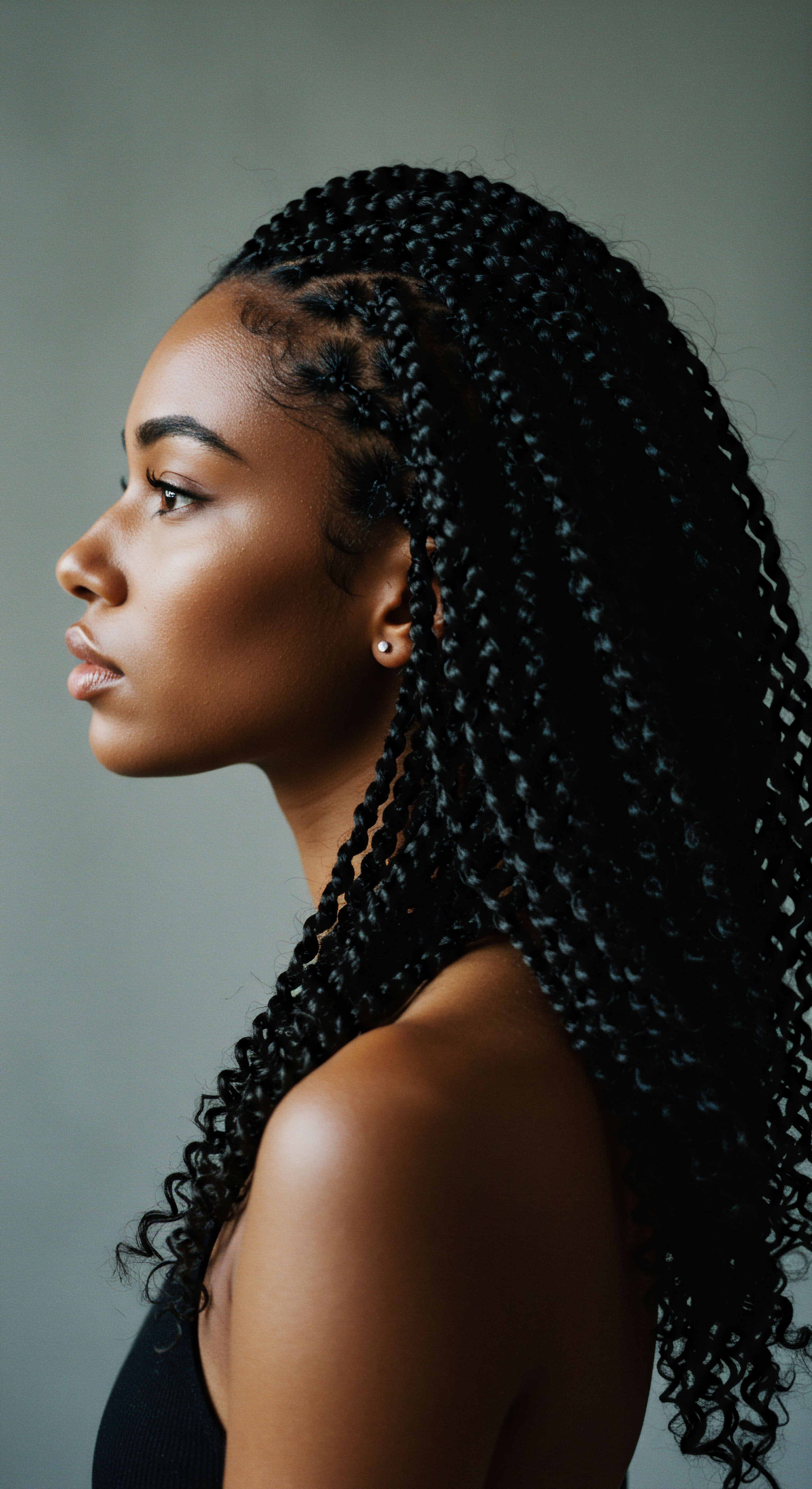
What Scientific Basis Supported Egyptian Hair Care Choices?
The selection of natural ingredients by ancient Egyptians, while perhaps guided by empirical observation, often aligns remarkably with modern scientific understanding of hair health. Their reliance on various oils, for instance, speaks to an intuitive grasp of lipid chemistry and its benefits for hair.
Consider the widespread use of Almond Oil and Castor Oil. Almond oil, extracted through cold-pressing, contains essential fatty acids, vitamins E and A, and minerals like zinc and magnesium. These components are known today to nourish hair, promote softness, and contribute to scalp health.
Castor oil, with its ricinoleic acid content, possesses anti-inflammatory and antimicrobial properties, making it beneficial for scalp conditions and potentially discouraging lice. The observation that these oils made hair “silky smooth” and helped manage pests was, in essence, an early form of practical scientific discovery.
Honey, another staple, is a natural humectant, meaning it draws moisture from the air and locks it into the hair strands. This property would have been particularly valuable in the arid Egyptian climate, preventing dryness and breakage. Furthermore, honey contains natural enzymes and antioxidants, which contribute to scalp health and can help reduce frizz.
A study on the efficacy of honey in hair care suggests it can reduce frizz by up to 60% and improve hair strength by 30% with regular use. This modern data point underscores the empirical wisdom of the ancient Egyptians in selecting honey for its hydrating and strengthening qualities.
Even the use of animal fats as styling agents, as revealed by analyses of mummified hair, had a scientific basis. These fats, rich in long-chain fatty acids like palmitic and stearic acid, would have provided a protective coating, smoothing the cuticle and offering a degree of hold. This primitive “hair gel” effectively mimicked the function of modern styling products that rely on lipids for conditioning and structure.
The inclusion of Henna in their hair care regimen also stands up to scientific scrutiny. Henna contains lawsone, a dye molecule that binds to the keratin in hair, providing a natural reddish color while also strengthening the hair shaft. Its antifungal and antibacterial properties also contribute to scalp health, making it more than just a cosmetic dye.

Cultural Contexts of Hair Care Practices
The choices ancient Egyptians made regarding hair care were deeply intertwined with their societal norms, religious beliefs, and artistic expressions. Hair was not merely a biological appendage; it was a powerful medium through which identity, status, and even spiritual alignment were communicated.
For instance, the widespread adoption of wigs, even by those with natural hair, speaks volumes. Wigs were not just about aesthetics or hygiene; they were elaborate statements of wealth and social standing. The quality of the wig, the intricacy of its style, and the materials used—human hair, wool, or plant fibers—all conveyed messages about the wearer’s position in society. The meticulous craftsmanship involved in creating these wigs, some taking up to 200 hours, highlights their value and significance.
Hair also held spiritual connotations. It was considered a source of vitality and power. The act of offering locks of hair in tombs, a practice observed from the Predynastic Period, suggests a belief in hair’s continued influence beyond death, perhaps as a protective element for the deceased. The symbolic depiction of pharaohs grasping enemies by their hair on reliefs further reinforces this idea of hair as a conduit of power and control.
The ancient Egyptians’ hair care practices were a sophisticated blend of practical necessity, intuitive scientific understanding, and profound cultural symbolism, reflecting a holistic approach to beauty and well-being.
The shifting hairstyles across different periods of Egyptian history also reflect evolving social and aesthetic ideals. From the short, round styles of the Old Kingdom to the longer, more elaborate wigs of the New Kingdom, hair fashion mirrored the broader cultural currents. These changes were not arbitrary; they were deliberate choices that communicated membership in a particular era or social group.
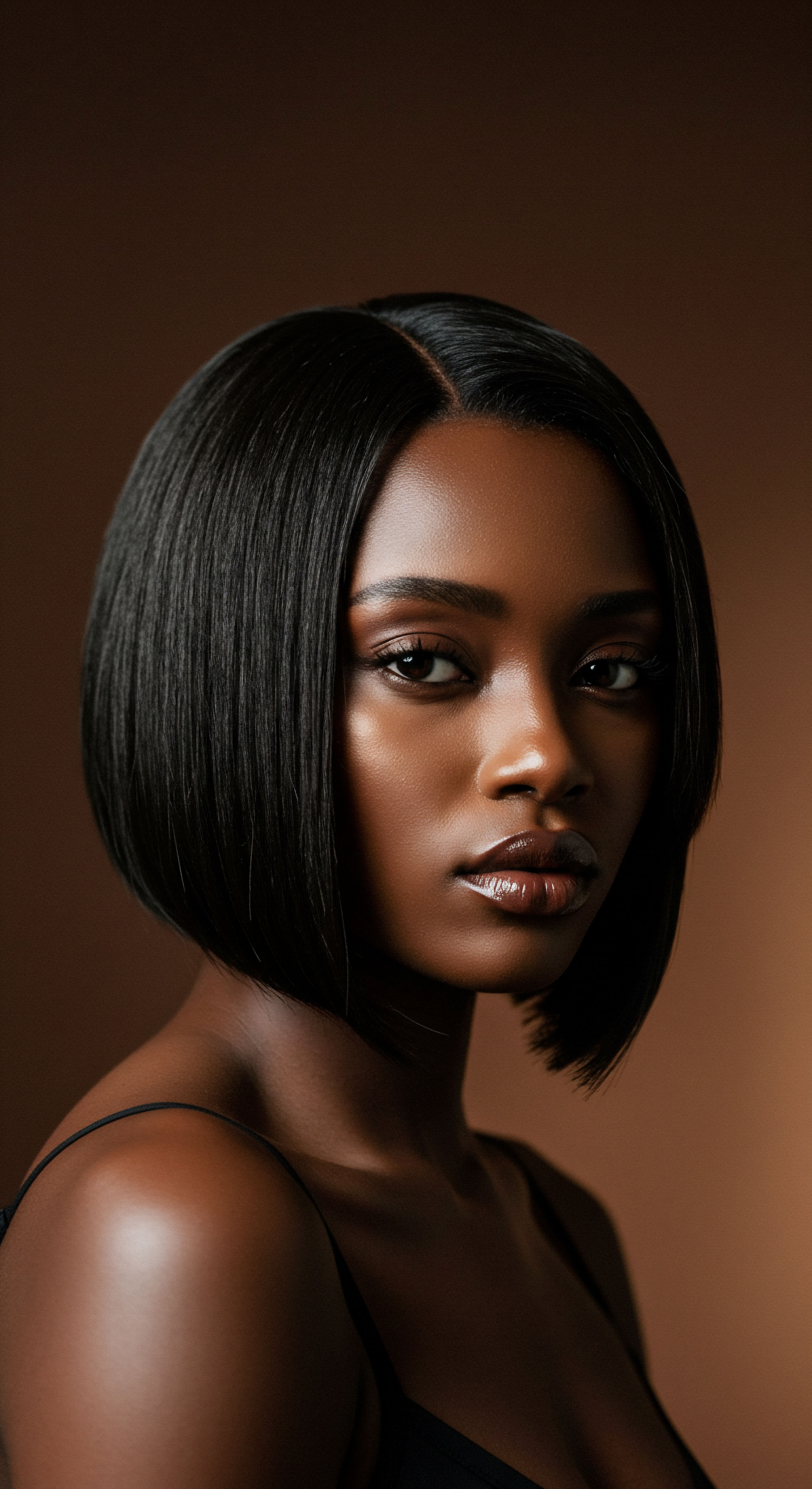
How Do Ancient Practices Resonate with Modern Hair Wellness?
The ancient Egyptian approach to hair care offers valuable lessons for contemporary hair wellness, particularly for those with textured hair who often seek natural, gentle solutions. The emphasis on nourishing oils, humectants, and natural dyes aligns with many modern principles of holistic hair care.
The Egyptian reliance on natural oils like almond, castor, and moringa mirrors the current popularity of these same oils in modern hair products, especially for textured hair which benefits greatly from rich emollients to combat dryness and enhance curl definition. The understanding that moisture is paramount, evidenced by their use of honey, is a cornerstone of modern textured hair care, where hydration is prioritized to prevent breakage and maintain elasticity.
Furthermore, the concept of protective styling, so prevalent in ancient Egypt through their use of wigs and intricate braids, finds a direct parallel in today’s textured hair community. Wigs, braids, and twists are commonly employed to shield natural hair from environmental stressors and minimize manipulation, promoting growth and length retention. This timeless practice, refined over millennia, demonstrates a continuous human desire to protect and preserve hair.
The holistic view of beauty, where hygiene, aesthetics, and spiritual well-being were interconnected, also holds relevance. Modern hair wellness advocates often speak of hair health as a reflection of overall internal balance, incorporating diet, stress management, and mindful practices alongside external treatments. The Egyptians, in their own way, understood this interconnectedness, seeing their hair care rituals as part of a larger commitment to a well-lived life.
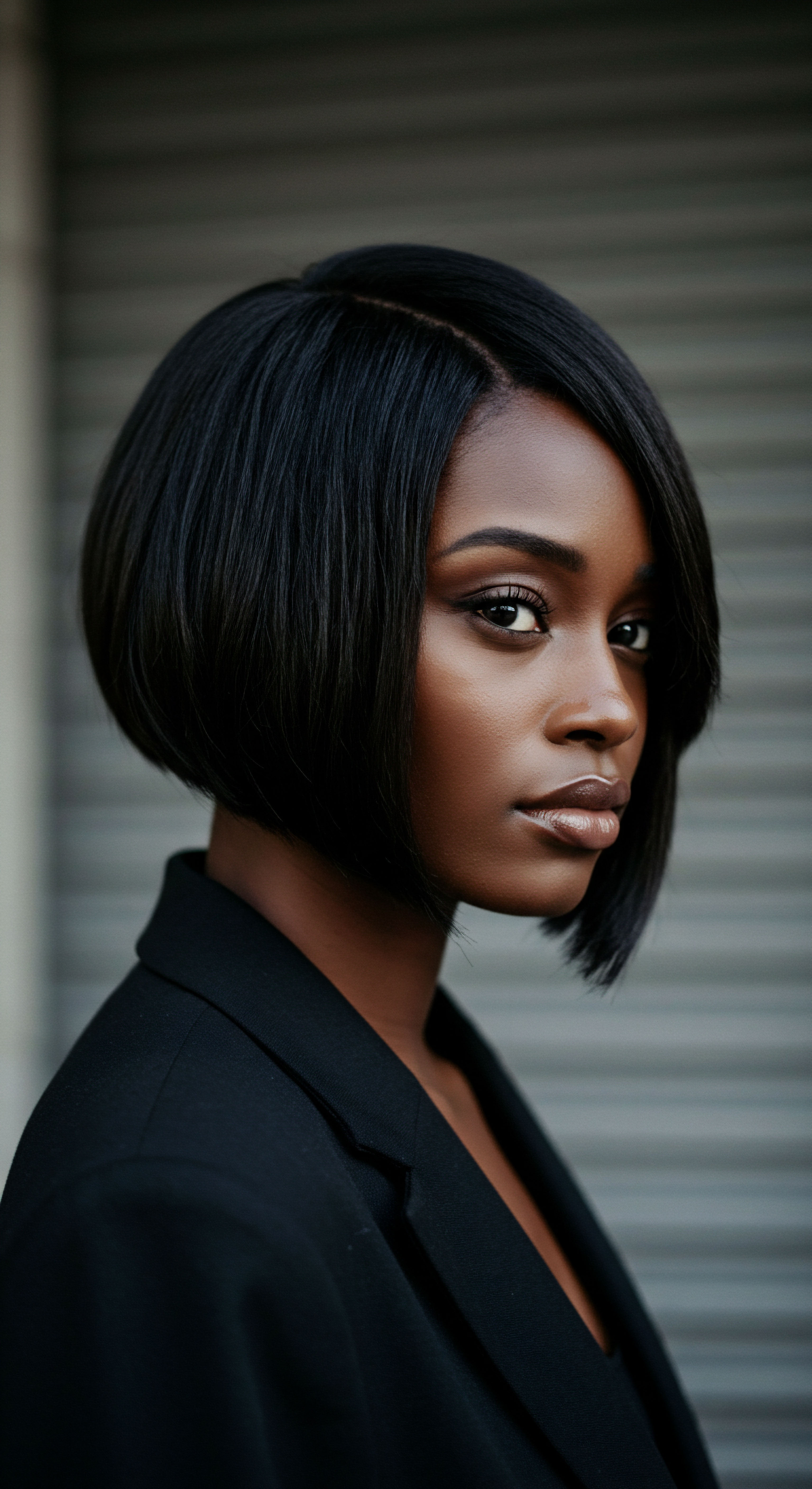
Reflection
As we draw our thoughts to a close, the echoes of ancient Egyptian hair care linger, whispering lessons across the expanse of time. Their meticulous practices, rooted in a deep reverence for the natural world and an understanding of its offerings, paint a picture of beauty rituals that were far more than superficial. They were a profound expression of self, status, and a connection to the very essence of life. The ingredients they chose, the methods they employed, and the cultural significance they attributed to hair speak to a timeless wisdom—a gentle reminder that true care often begins with the earth beneath our feet.
The legacy of the Nile’s people continues to shape our perception of beauty, reminding us that the simplest, most natural elements can hold the deepest secrets to radiance.
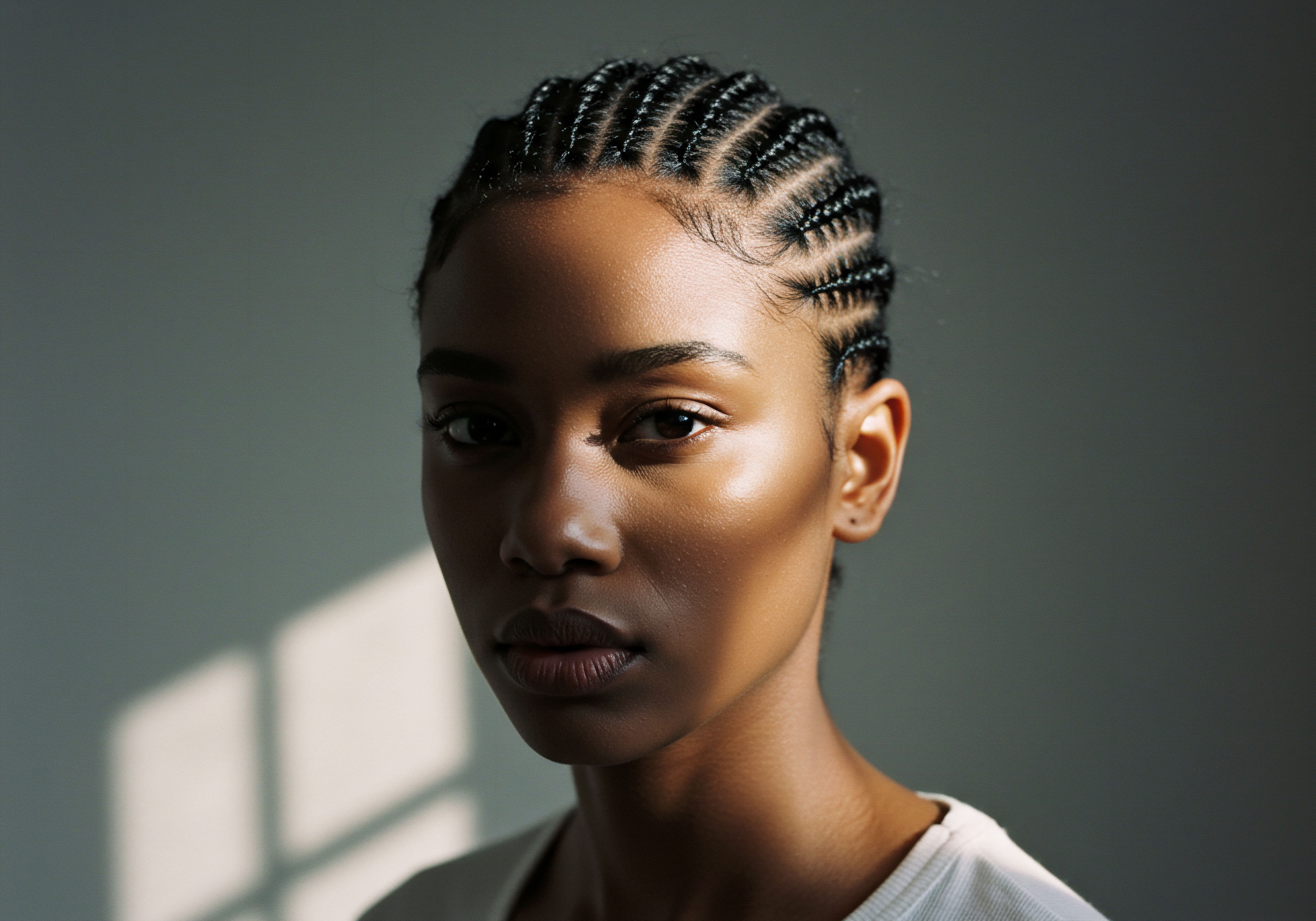
References
- Cox, J. Stevens. “Wigs from Ancient Egypt.” The Journal of Egyptian Archaeology 63 (1977) ❉ 67-84.
- Fletcher, Joann. “Ancient Egyptian Hair.” In Ancient Egyptian Materials and Technology, edited by Paul T. Nicholson and Ian Shaw, 496-497. Cambridge University Press, 2000.
- Grapow, Hermann. Grundriss der Medizin der alten Ägypter V ❉ Die medizinischen Texte in hieroglyphischer Umschrift. Akademie Verlag, 1958.
- Kamal, Hassan. Ancient Egyptian Medicine. The American University in Cairo Press, 1967.
- Kandil, Hoda Abd Allah, and Mahmoud El-Mohamdy Abdelhady Salama. “Role of the Hair in Ancient Egypt.” International Journal of Tourism and Hospitality Management 1, no. 1 (2018) ❉ 77-88.
- McCreesh, Natalie, and Andrew G. Chamberlain. “Hair styling in ancient Egypt ❉ an investigation of the hair of a mummy from the Dakhleh Oasis.” Journal of Archaeological Science 38, no. 11 (2011) ❉ 3205-3211.
- Quirke, Stephen, and Jeffrey Spencer. The British Museum Book of Ancient Egypt. British Museum Press, 1992.
- Robins, Gay. “Hair and Gender in the Tomb Chapels of the Eighteenth Dynasty.” Journal of the American Research Center in Egypt 39 (2002) ❉ 107-118.
- Shaw, Ian, and Paul Nicholson. The Dictionary of Ancient Egypt. British Museum Press, 1995.
- Tassie, G.J. “Hair-Offerings ❉ An Enigmatic Egyptian Custom.” Archaeological Review from Cambridge 28, no. 2 (2013) ❉ 93-107.
- Werziniski, W. Atlas zur Altägyptishchen Kulturgeschichte. Vol. I. Leipzig, 1923.